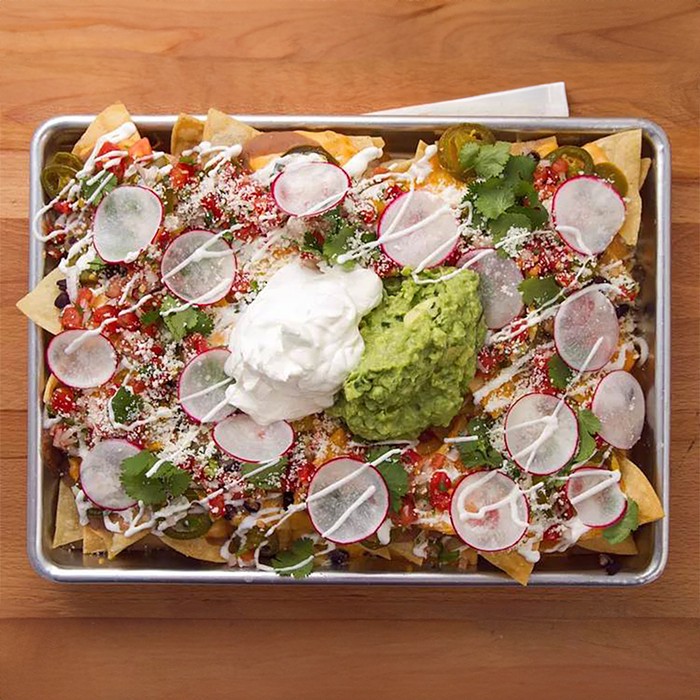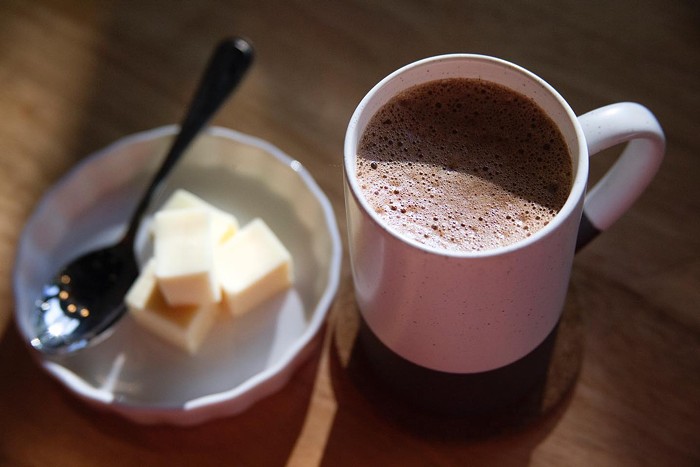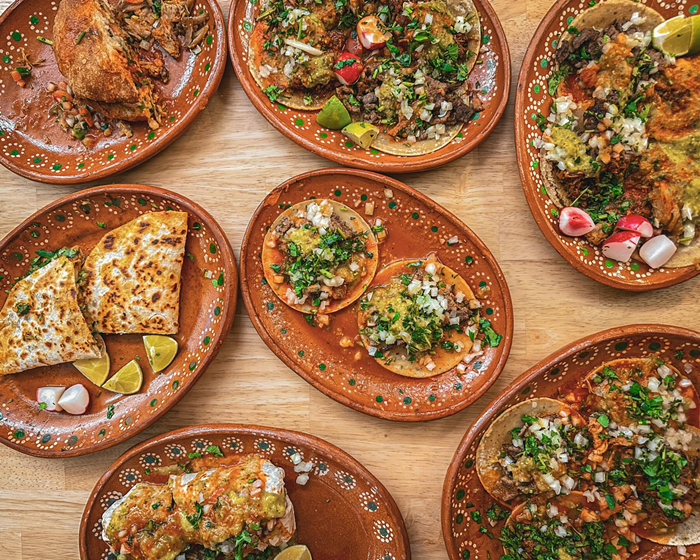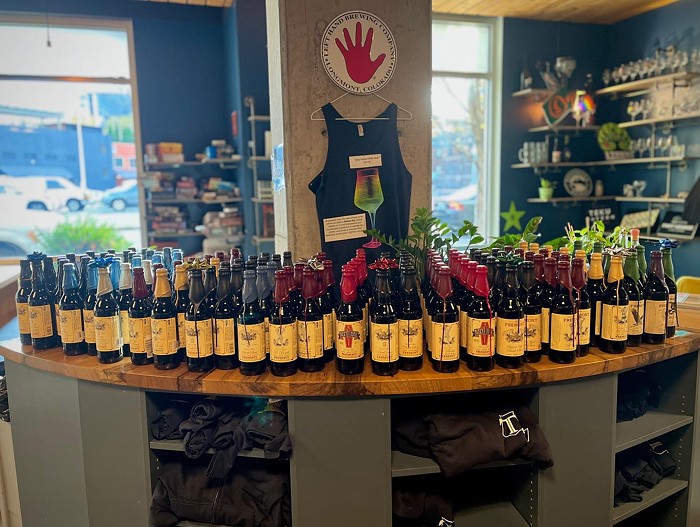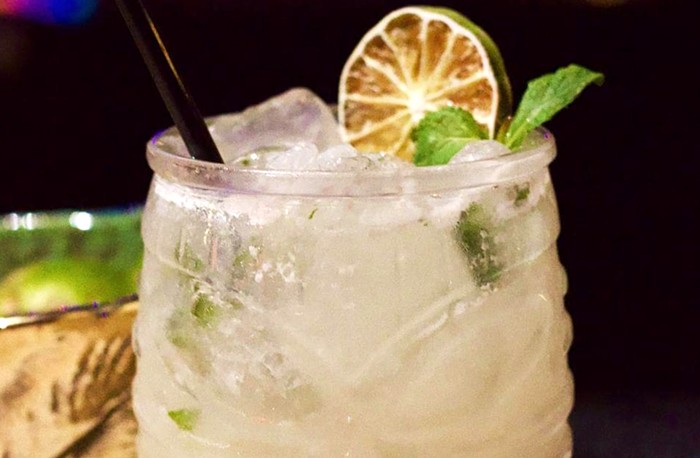Four years ago while visiting family in Penang, Malaysia, I ate some of the most memorable food my life: assam laksa, a deeply spicy, sour, and fishy stew; char kway teow, fat rice noodles stir-fried in a blazing hot, blackened wok with shrimp, egg, and bean sprouts; and cendol, a bowl of shaved ice topped with palm sugar syrup, coconut milk, sweet red beans, and bright green, grassy pandan noodles.
That wasn't all. There were also slabs of flash-fried Indonesian tempeh (nutty, soft, and moist—nothing like the tempeh I'd eaten before) served with freshly made sambal. There were deeply complex Indian curries served with warm paratha bread just off the griddle. And then there was a 10-course Nyonya feast with dishes such as kang kung (water spinach) sautéed with salty fermented shrimp paste. Nyonya is the distinct, centuries-old cuisine created when Chinese merchants married into Malay families.
During the day, most of our meals came from street food vendors called hawkers. Dinners were eaten at hawker centers, open-air markets filled with aisles of food carts, as well as tables and chairs filled with families of all ages and ethnicities: Malay, Chinese, Indian, British, Filipino, Indonesian. These communities and cultures have been coexisting and intermingling as long as the spice trade has been going on, and through modern periods of colonialism.
Just as there isn't a single Malaysian culture, there isn't one Malaysian cuisine. Instead, it's a rich blend of flavors that both overlap and retain their distinct identities.
The same richness that made a deep impression on me also changed the lives of Kevin Burzell and Alysson Wilson, owners of Kedai Makan. Since 2012, the couple, who spent significant time traveling throughout Malaysia and Southeast Asia, have operated their Malaysian street food business on Capitol Hill, first as a farmers market stand, then a walk-up window serving takeout food, and, since September of last year, a full-service restaurant. Their affection for and study of Malaysian food is evident in the restaurant's complex, boldly flavored dishes.
A starter of roasted peanuts ($3.50) gave a great preview of what our meal had in store. The peanuts, still housed inside their papery maroon skins, were simultaneously salty, bright, sweet, spicy, and funky, courtesy of lime leaf, sugar, chilies, and tiny fried anchovies. Roti jala ($6.50), or net bread, was another auspicious opener. Using a squeeze bottle, cooks pour the batter onto the griddle, forming and folding the roti into a web of soft, eggy tangles. It was a pleasure to look at, and also great fun to rip the airy bread apart and dunk it into a bowl of piquant yellow lentil curry dotted with pungent mustard seeds.
Lime juice, fish sauce, and mint gave salt and brightness to a salad made of long beans, prawns, and sad, mealy tomatoes, called kerabu kacang panjang ($7.50). Bean sprouts and toasted rice powder added welcome texture and crunch, though the whole dish was dominated by an intense amount of chilies that overwhelmed the delicate prawns. A very generous plate of lamb fried rice, called nasi goreng kambing ($11.50), seasoned with gritty curry powder, made my tongue and lips buzz pleasantly with spice. But there was so much curry powder, along with a sweetened soy sauce called kecap manis, that together they drowned out the typically strong, distinct flavor of the ground lamb in the dish.
As part of their expansive new home, Burzell and Wilson have added a bar and cocktail program featuring shots of liquor with Chinese medicinal infusions. Shots with names like "Libido" and "Strength & Stamina" are made from alcohol steeped with herbs such as ginseng, wolfberry, angelica root, and eucommia bark. Just like the names, there's no subtlety to the flavor of these drinks. One sip of my dining companion's Old Fashioned Healing cocktail—made from Benedictine, bitters, and Evan Williams bourbon infused with ginseng, turmeric, galangal, lemongrass, and something called radix astragali—threatened to wreck my palate for the rest of the meal.
In the onslaught of seasonings, dishes that showcased restraint stood out. The base of seafood curry mee ($12.50) is a rich, dark broth fragrant with a chili paste called rempah, made with shallots, ginger, shrimp paste, and other spices, and coconut milk, the flavors long-simmered into the dish. The ingredients that were added in later—clams, squid, laksa leaf (similar to cilantro), slippery wheat noodles—were more subdued, adding light layers of flavor instead of ones that beleaguered the tongue.
Whole mackerel ($15.50), its belly stuffed with rempah, was oven roasted so it maintained all its moisture. While some consider mackerel to be strongly flavored, "fishy" fish, here its inherent oiliness was like a salve on the tongue—clean and cooling. The mackerel was served with a tamarind dipping sauce, white rice, and kerabu taugeh, a tangy salad made from bean sprouts. None of the accompaniments were necessary, though, and we picked the bones of the fish entirely clean with chopsticks, and then our fingers.
My meal at Kedai Makan was satisfying, though days later I found myself feeling sad and missing Malay Satay Hut, the Malaysian restaurant that was a longtime fixture in the International District—its flaky roti canai served with potato curry, the kang kong sautéed in shrimp paste, the dark, sticky Guinness pork spare ribs, and curry fish head stew with okra. Malay Satay Hut, which offered a very different and much more extensive menu than Kedai Makan, closed in 2013, leaving Kedai Makan the only Malaysian restaurant in the city. (Malay Satay Hut's owners still operate a Redmond location of the restaurant. While the Seattle location was popular, I don't remember ever having to wait an hour and a half for a table, as I did on a recent Friday night a Kedai Makan.)
Like the hawker centers in Penang, the area around Kedai Makan—which includes the bars Montana, Revolver, and the Hillside, as well as walk-up window Tortas Condesa and the brand-new Dino's Tomato Pie—teems with energy every night. Instead of extended families dining together, the streets are mostly filled with drunk people smoking cigarettes and screaming into cell phones.
Inside, the walls of Kedai Makan are painted a bright blue, and framed black-and-white photos from Burzell and Wilson's travels cover them: smiling Malaysian children, men pounding spices with a mortar and pestle, ordinary domestic objects. It's a reminder that what Burzell and Wilson are offering is their vision of Malaysia. Their interpretation of the country's food is a good one, but I'm hungry for more.

